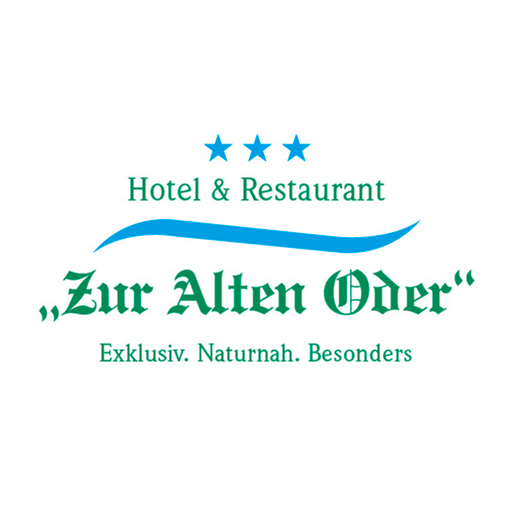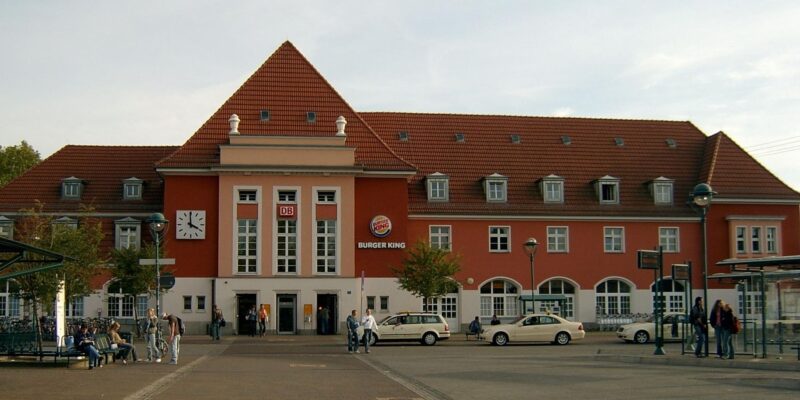Frankfurt (Oder) Train Station
If you travel to Frankfurt Oder, you can do this by train, among other things. And of course, if you're looking for accommodation, we'd love to have you in the "Zur Alten Oder" to welcome. Come stay, eat and let us take very good care of you.
Frankfurt (Oder) station, also known as Frankfurt (Oder) Pbf, is the most important passenger station in the city of Frankfurt (Oder). The station is located south-west of the city center of Frankfurt (Oder) above the city center in the Oder valley, to the south-west is the district of Beresinchen. It is one of the most important train stations in the state of Brandenburg. The station serves both long-distance and local passenger traffic and has been the border station to Poland since 1945.
Terminus Station
The first Frankfurt station was a terminal station with one departure, one arrival and one siding for passenger traffic. The station building was on the north side of the tracks. At the end of the tracks on the east side of the station there were wagon, locomotive and goods sheds as well as a post expedition. After the construction of the through station, workshop facilities were built on the site. The postal expedition became the residence of the officials, the entrance building was used for administrative purposes. In 1945 it was destroyed in a bomb attack. One of the workshop buildings (Bahnhofstraße 7) that was built in the mid-1850s has been preserved and is a listed building.
First through station
For the through station for trains heading for Breslau, the route from Berlin was routed southwards in a right-hand bend. The new train station was built in the arch. The entrance building from 1846 was built under the direction of the construction director of the Niederschlesisch-Märkischen-Bahn, Ludwig Henz. It was very similar to the station buildings in Görlitz and Kohlfurt that were built around the same time. "The shape and details of the facades of the fort-like, Renaissance-style building, arched windows and cornices, coupled small arched windows in the mezzanine, however, reveal the common origin of these buildings"[, only the towers at the ends of the building were not executed here. On the city side of the station, the goods shed, locomotive shed and other facilities for vehicle handling were built on the opposite side. While the Ostbahn line could still be introduced into this station, the facilities for the line to Posen, which opened in 1870, were not sufficient. The Märkisch-Posener railway was given its own part of the station, the Posener Hof, on the east side of the station using the old goods facilities of the Lower Silesian-Märkische Railway. They built a new shed on the other side of the station, which was also used by the Ostbahn. The shunting yards of the Ostbahn were located in the so-called Ostbahnhof north of the actual station. The goods yard of the Szczecin Railway was built further north of the city on the site of the later local goods yard on the southern edge of the marshalling yard.
Today's train station
The main features of today's station are the result of the station renovations in the early 1920s. The entrance building from 1923 was built by Reichsbahnrat Beringer. With "its neo-baroque attitude" it is considered "one of the last eclectic station buildings" before new architectural styles prevailed. In 1926, platforms 3 and 4 were provided with a platform hall, some smaller buildings are perpendicular to the station building as a conclusion of the elevated track systems. Access to the station building and from there to the platform tunnel is at ground level; there is no continuous tunnel from the platforms in the direction of Beresinchen. The station has three island platforms. Another platform, the original platform 1 next to the entrance building, was removed when the station was renovated after 1990.
Surroundings
In front of the entrance building is the station forecourt, where the bus station is located. The tram stops are about 100 meters north of the entrance building at the underpass (Beresinchen tunnel) to Berezinchen. From there, further north, the Bahnhofsstraße, which was formerly owned by the railways, leads towards the city center. Its development was almost completely destroyed in the Second World War and replaced by new buildings. The newly reconstructed "City Residence Hotel Frankfurt Oder" is located between the bus station and the tram stop (opposite the Beresinchen tunnel). The Kiliansberg settlement on the east side of the station forecourt was built around the same time as the station was being renovated between 1922 and 1924 and was also designed by Beringer. It lies on a steep slope above the Oder valley and was built by the Ostmark settlement company with apartments for the railway workers who moved to Frankfurt after the Reichsbahn headquarters moved. Between the houses stands the memorial designed by Beringer and completed by the sculptor Fürstenberg for railway workers who died in World War I in 1535. Settlement and monument are on the list of cultural monuments of the state of Brandenburg.
You can find more information about the train station on the Website.


Recent Comments